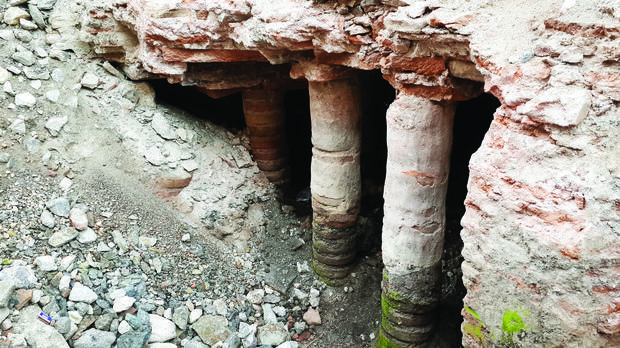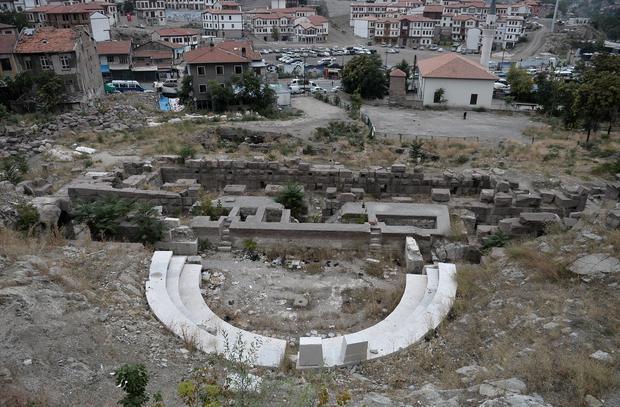Ankara’s ‘Aspendos’ left to its fate
ANKARA

DHA photos
Two years after restoration of the world famous ancient Aspendos Theater with white marble sparked outrage in the country, a similar upset is seen in Ankara.According to daily Hürriyet, a 2,000 year-old ancient theater discovered during excavations in one of Ankara’s oldest neighborhoods, Ulus, was restored with white marble by the Ankara Metropolitan Municipality two years ago.
The choice was controversial, as the previous structure had been rose colored. As such, the Culture and Tourism Ministry objected to the situation and halted the restoration work.

In 2009, archaeologists from the Museum of Anatolian Civilizations unearthed the ancient Roman theater, which was built between 1st and 2nd century, during excavations at a first degree archaeological site located between the Hacı Bayram Veli Mosque and the Ankara Castle.
The Culture and Tourism Ministry had structures built on the excavation’s remnants and demolished structures around the ancient theater in order to open the theater to tourism. The Ankara Metropolitan Municipality wanted to turn the historical theater into a theater and concert area as part of its Ulus Historical City Center Renovation Field Project. Within a protocol with the ministry, the municipality undertook the restoration.
Work started in the ancient theater on July 7, 2013, after the Ankara Cultural and Natural Heritage Preservation Board approved the building survey, restitution and restoration projects.
Project experts have announced the original seats would be used for the theater’s first two rows, with the other rows restored with recyclable steel wire boxes to prevent damage to the structure. The experts said the boxes would be covered with water-proof composite wood and that the demolished walls of the stage would be restored with original materials as much as possible.

Contrary to this statement, however, the municipality restored the first three rows of the theater with marble. Although the other stones in the theater were a rose color, the use of the very different white marble brought criticism. The Culture and Tourism Ministry archaeologists objected to the white marble and halted the restoration work.
Following this decision nearly two years ago, the ancient theater was left to its fate. Officials at the Ankara Metropolitan Municipality refused to comment about the issue.
Historical columns covered with asphalt
In another cultural-preservation-gone-wrong story, metropolitan municipality workers doing sewage work on Hükümet Avenue found Roman-era historical columns in a tunnel and consequently proceeded to pave the area over.
After their sewage work was done, municipality workers covered the columns with earth and paved the area with asphalt, effectively covering up the columns.
About the pavement, the municipality workers said, “There is a procedure about the historical artifacts discovered during excavations. We need to inform the Culture and Tourism Ministry officials right after we discover a historical artifact. With the decision of the Preservation Board, we put asphalt pavement on the columns. Officials took the necessary measures below the asphalt.”
















